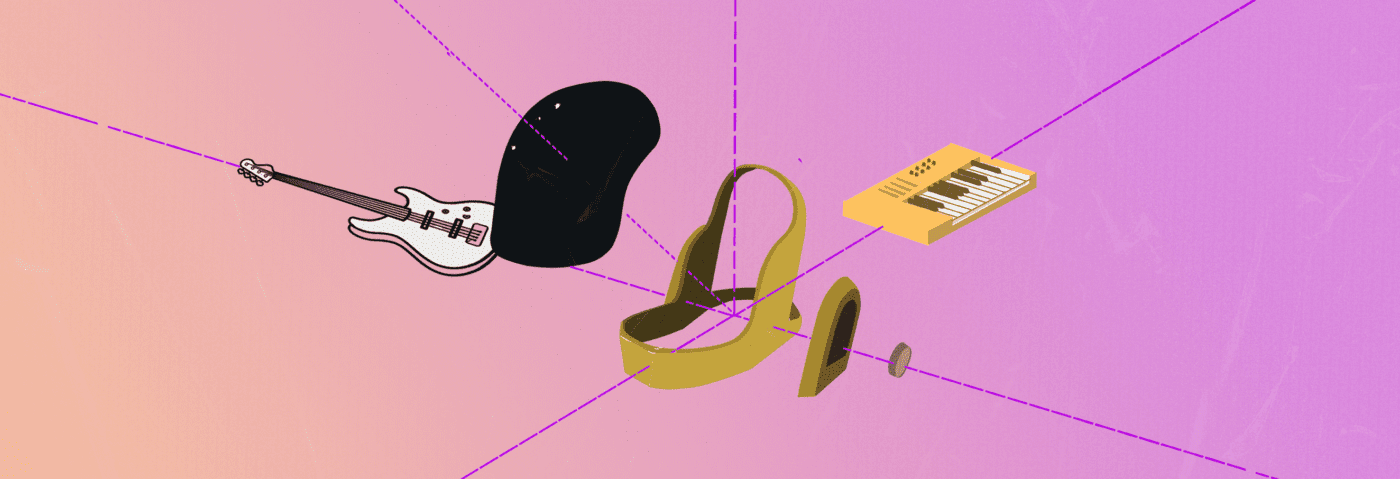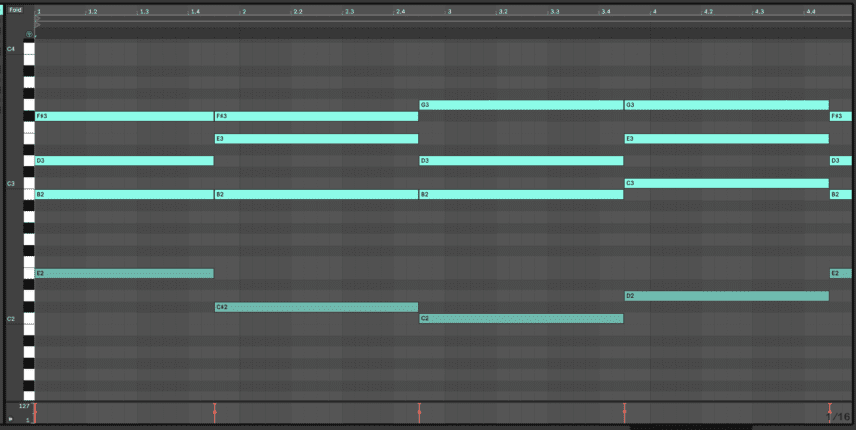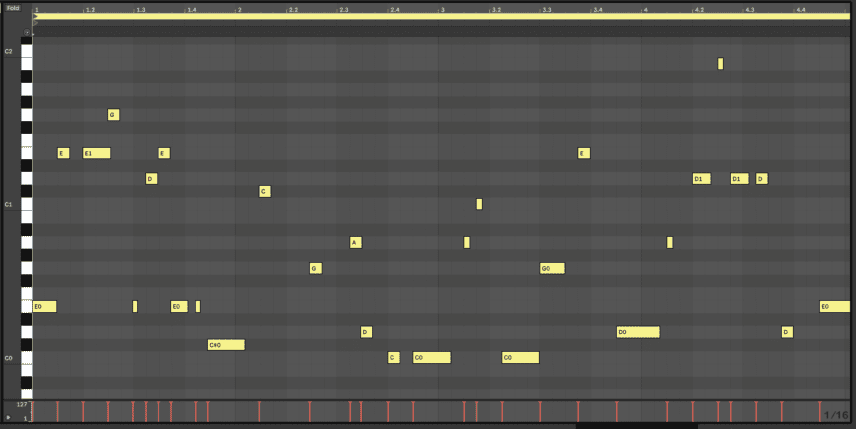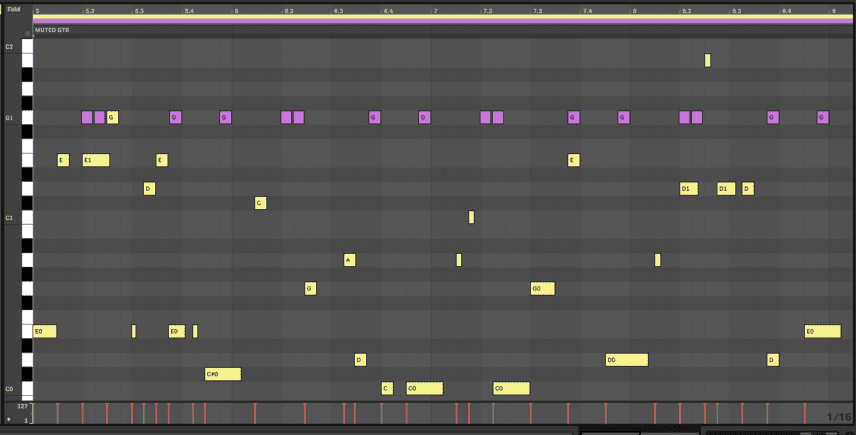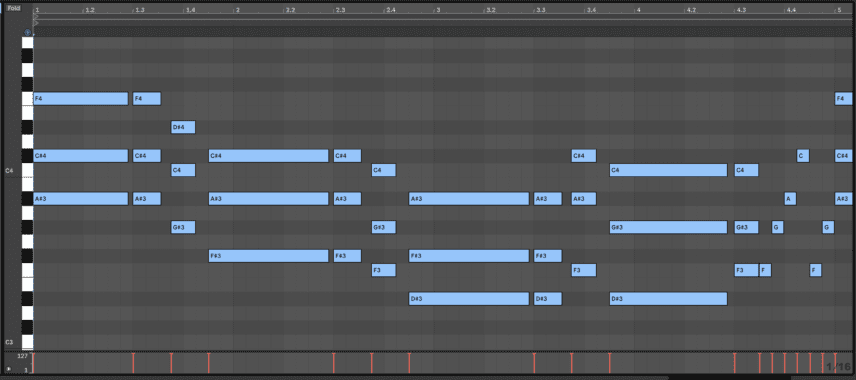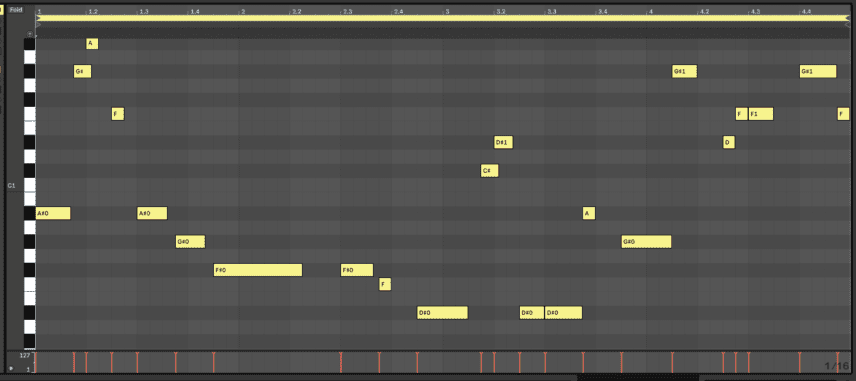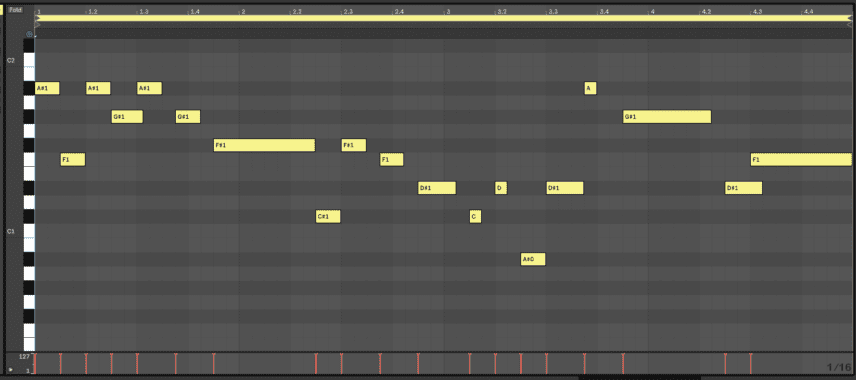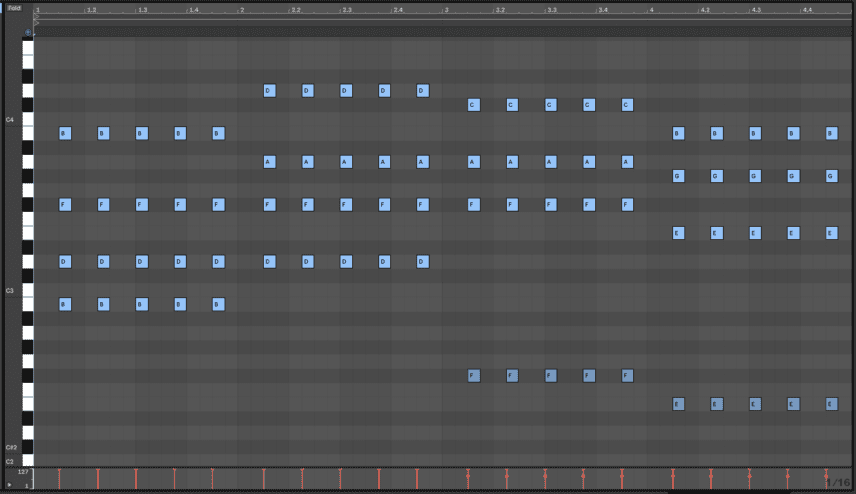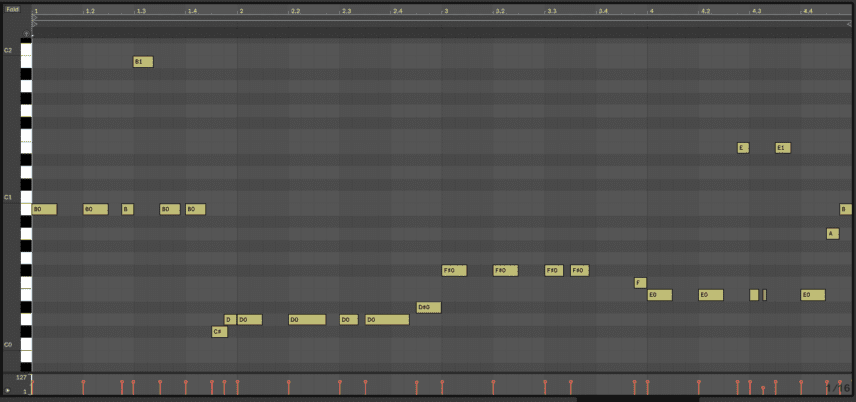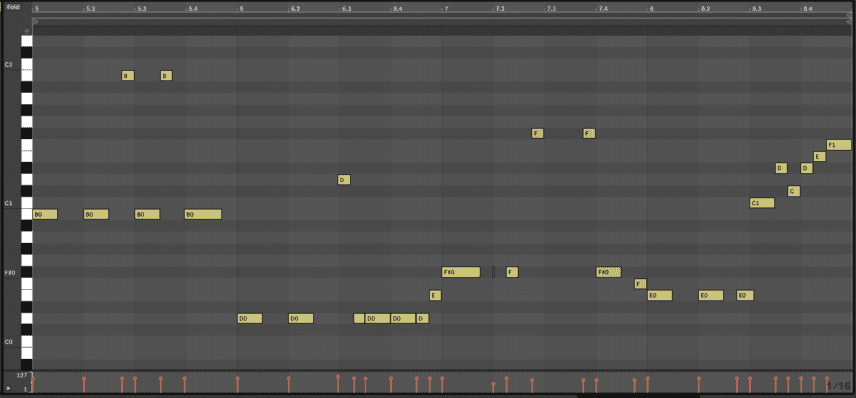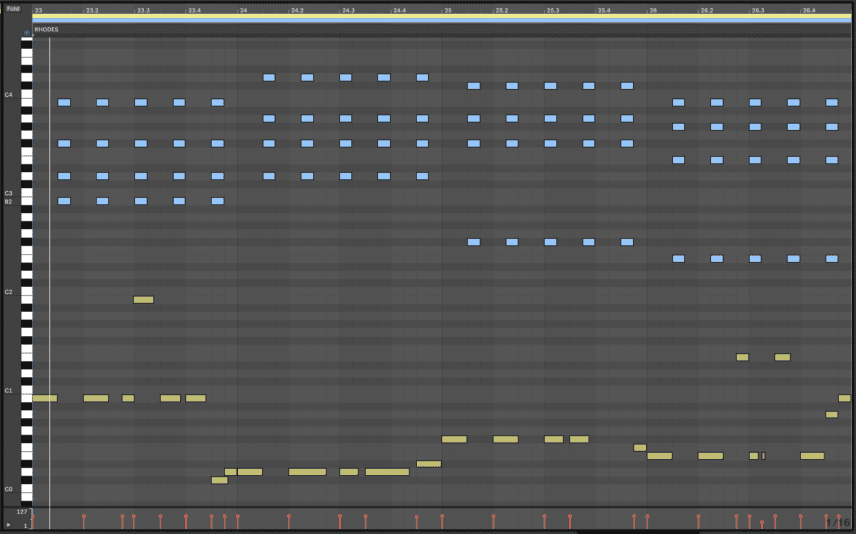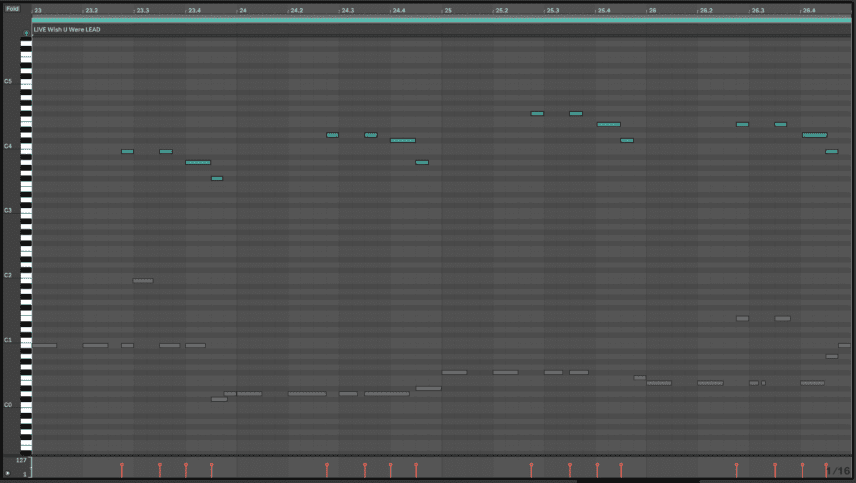In part two of this installment of Passing Notes, we break down three more Daft Punk basslines while noting composition and arrangement tricks that the iconic duo applied regularly in their productions.
In part one of this story we started our analysis of Daft Punk’s most famous riffs and basslines by recreating sections from ‘Da Funk’, ‘Around The World’ and ‘Something About Us’, while looking at these sections’ harmonic and rhythmic elements. Despite only breaking down three basslines we already noticed tricks that the French duo used repeatedly, such as muted notes, strategic rests in riffs, rhythmic lead parts designed to work with the bass, and more.
For this part we’ve recreated sections from Discovery’s ‘Voyager’ and Random Access Memories’ ‘Get Lucky’ and ‘Instant Crush’. In doing so we’ve encountered some of the bass composition ideas we noted in part one as well as many new ones.
You can follow along by downloading the project session here . It contains the section recreations and MIDI files.
Voyager
‘Voyager‘ is the tenth track from 2001’s Discovery album and it features the classic ingredients of a French touch/French house track. Here’s the section we recreated:
The four bar repeating chord progression, played by a slightly detuned digital strings-style pad, goes:
E minor 7 (add 9) -> C# minor 7 (11) (add 9) -> C major 7 (add 9) -> D7 (11) (add 9)
These chords are actually all slash chords featuring a triad played by the high notes with a different root note played by the low note and the bass. As a result, this progression could also be written as follows:
B minor/E -> Bsus4/C# -> G major 1st Inversion/C -> Cmaj/D
The second chord is a borrowed chord and temporarily takes the track away from the key of E minor and into the key of C# minor. This is evident as there is no C# note in the E natural minor scale. The key changes and regular presence of 7th, 9th and 11th notes in the chords bring the progression closer to jazz territory but the bassline does enough to draw attention away from the key change, smoothing out the transitions between chords.
You can really notice the tension and release caused by the riff when listening to the bass and beat in solo:
The busy short notes make you nervous and build up tension but when the line resolves to longer sustained root notes it brings relief. The short and more plucky notes add a lot of syncopation as they emphasize many different 16th notes every bar.
For example, in the first bar alone, the first half of the bar emphasizes the first and third 16th notes (which are actually 8th-notes) but the second half of this bar throws in some hits on the second and fourth 16th notes.
The bassline is also supported by a rhythmic guitar part that seems to only emphasize a G note.
The two sound great together, especially because the guitar accent fills space between the bass notes, forming a call and response relationship.
We saw similar techniques in part one with the lead synth in ‘Around The World’ and the muted guitar in ‘Something About Us’. We’ll also encounter this trick again while looking at ‘Get Lucky’.
Bass Composition Ideas From ‘Voyager’:
- Key changes in chord progressions stick out less when a busy bassline is the forefront element of a track.
- Try writing a chord progression where the chord changes occur every 8th-note before the downbeat and emphasize these changes with a nice low bass note.
- While programming basslines, use short or quieter notes between more sustained notes to create rhythmic contrast.
- If you’re trying to write a busy and longer bassline, make sure that you’re not hitting the same notes at the same exact time in every bar – emphasize different 16th notes!
Instant Crush
‘Instant Crush‘ was the fifth track and fourth single from the French duo’s final album, Random Access Memories, released in 2013. The highlight of the track is undoubtedly the chorus section that features a busier chord progression with clever bass fills as well as some great vocals by The Strokes’ frontman Julian Casablancas.
This album relied on traditional instrumentation to a far greater degree than the previous Daft Punk albums so there were many collaborators and session musicians involved. One of the lesser-known of these was bassist Nathan East. With over 2,000 recordings under his belt, he is estimated to be one of the most recorded bass players in history. His resume includes recordings for the likes of Michael Jackson, Phil Collins, Stevie Wonder and Herbie Hancock, among many more.
East played all electric bass parts on the album, including those of ‘Instant Crush’ and ‘Get Lucky’, which we will take a look at in the next section.
Here’s our much more MIDI-sounding recreation of a chorus section from ‘Instant Crush’:
The only two elements we’re going to focus on are the chords and the bass. The progression goes:
A# minor -> (A# minor – G# major) -> F# major -> (F# major – F minor) -> D# minor -> (D# minor – A# minor first inversion) -> G# major first inversion -> F minor
It’s worth noting that in the five Daft Punk songs we have analyzed so far, this is the third in which we’ve encountered a chord progression where most of the chord changes occur on either the 8th or 16th-notes before downbeats! This is definitely a trick the duo have employed regularly when producing tracks with funkier basslines.
In this chorus section, the bass’ primary function is to catch every single root note of every chord. However, East uses the space between the extended sustained chords to add fills and other notes that give the bass a much more melodic role. Here’s the bass and beat in solo:
Let’s start with the first four bars.
The first and second fill occur on the first and third bars and they emphasize the octave and minor 7th notes. These are the A# and G# notes in the A# minor chord and the C# and D# notes in the D# minor chord. You’ll also notice that the notes slide into each other. ‘Around The World’ and ‘Voyager’ also feature similar fills using octaves and slides with minor 7th notes.
The next fills occur in the fourth bar, where a clever placement of the G# octave, D# note and F note lead perfectly into the F minor chord that comes in on the second half of the fourth bar. There’s also another F note squeezed into the last 16th-note of the bar to add some syncopation before the progression repeats once more.
A key fact about the notes in the fourth bar’s fills are their lengths. Almost every consecutive note has a different length. This may seem simple to program but it is a hallmark of bass players or programmers with a natural instinct for rhythm.
This point about note length also applies when East plays the main chords’ root notes.
For example, the sustained low F# note at the end of bar one versus the shorter low D# note at the end of bar two. Another example is the descending low G# note again at the end of bar one versus the much shorter descending F note before the D# minor chord at the end of bar two. Timing-wise these two examples hit at the same time in their respective bars, but their note lengths are different.
The bass in the next four bars has very similar fills and aspects with the exception of a Latin-sounding fill starting straight on the downbeat. The Latin aspect comes from the consecutive root and fifth notes (the higher A# going back and forth with its fifth interval F).
Bass Composition Ideas From ‘Instant Crush’:
- While programming bass under sustained chords, change the length of your bass notes so that they are not all the same – this will add rhythmic tension and release.
- When adding bass fills, a healthy choice of three, four or even two notes that are rhythmically interesting can be more than enough to lead into the next chord.
- Try mixing things up in your bassline by programming occasional fills that start on the first downbeat, like the fill in bar five of the eight-bar section we looked at.
Get Lucky
There’s no need to do a big introduction for this song, as anyone who was alive in 2012 and 2013 heard it in some form or another. ‘Get Lucky‘ was the first single from Random Access Memories and it won the Grammy award for Record of the Year in 2014.
The bass was again recorded by Nathan East with Nile Rodgers recording the main guitar parts.
Rodgers stated in an interview that he recorded his two parts in the song by muting all other elements and only listening to the drum track. He also mentioned that every other part was re-recorded after his contribution, including the bass. This did not stop East from laying down another outstanding bass part but it highlights just how far Daft Punk would go to ensure that every single element complemented each other.
Here’s our recreation of eight bars from ‘Get Lucky’:
There are so many lessons to be learned from the three musical parts going on here, especially as they were recorded by one of the best session bass players of all time and one of the best funk guitar players of all time with two of the biggest producers of all time at the helm.
These parts are Nile Rodgers’ funk guitar rhythm emphasizing every third 16th-note and his rising melodic guitar riff, along with East’s busy low-end-heavy bassline. We’ve replaced the strummed guitar accents with Rhodes stabs while also swapping out the guitar melody for a lead synth to separate the elements more clearly.
The key is B Dorian and the chord progression goes B minor -> D major -> F# minor -> E major. This is, in fact, exactly the same progression as in ‘Around The World’ but it has been transposed up two semitones from A minor to B minor.
The lesson from this may be that there’s no problem using the same chord progression in multiple tracks – as long as you put about twelve years in between!
For the bass, East uses a lot of the same techniques we saw while breaking down ‘Instant Crush’, including similarly timed fills and contrast between note lengths. However, his lines in ‘Get Lucky’ are an absolute masterclass in octave playing and rhythmic accompaniment. Here’s the bass in solo with the drums:
Any amateur bass player can play root notes with octaves and this is one of the first habits bassists acquire while learning. Despite this, the most famous basslines in history played or programmed by incredible musicians also feature many octaves. It’s not rocket science but it’s all about the timing.
All eight of the bars in this section mainly feature only root notes with their octaves but the lines still sound interesting because in every bar, the timing of the notes, the number of notes and the note lengths are changing. For example, bars one and three have more short staccato notes but the second bar with D major has more sustained notes. These kinds of subtle differences allow the bassline to tell its own story despite everything else going on in the track.
There’s a reason we mentioned that East re-recorded his part after Nile Rodgers’ contributions: the bassline is designed to perfectly move around the guitar part. Listening to both in solo, you notice just how little the bass notes play at the same time as the rhythmic guitar part:
To be precise, the 28 bass notes in the first four bars only hit at the same time as the rhythmic guitar seven times. This is no coincidence!
The bass also works well with Rodgers’ melodic riff. This is almost reminiscent of the lead synth in ‘Around The World’ or the muted guitar parts from ‘Something About Us’ and ‘Voyager’. Here are the two in solo:
Having one mono or lead-style musical element that works in harmony with the bass was clearly a regular item on Daft Punk’s to-do list while producing tracks with active basslines at the forefront.
Bass Composition Ideas From Get Lucky:
- Choose one or more rhythmic elements from your track and try to program a bassline that very rarely hits at the same time as those elements.
- Well-timed root notes and octaves can truly carry large portions of basslines.
- When writing bass fills, make sure to sometimes have notes play on one or both of the last two 16th-notes before the next downbeat. This works great with transitional notes – for example, a C# note while going from a C chord to a D chord.
